Welcome travelers. In mid-July, we had the opportunity to dive into the work of a new storyteller, who brought characters to life like only he could in The Trials of Knights (Heroes of Lotine Book 1). Now, we’re faced with an even greater opportunity, as we’re able to learn more about the story, and its follow-ups, but also the talespinner who is bringing it to bear. Read on to read our interview with the talented Horace Whitehouse!
Tellest: Greetings Horace! I wanted to thank you for introducing me to your story, and to Lotine. It’s a world that’s at once familiar and strange, pulling inspiration from the classics, although you carve your own way. It must have been very time consuming to put something like that together, and to work on what comes next, so I’m very appreciative of your time!
Horace Whitehouse: Thank you for your kind words and appreciation! You’re right, it is quite time consuming to put together a fantasy world but it’s also very enjoyable, especially being able to look at the finished product. Sometimes it feels like I spend more time in Lotine than I do our own world!
T: Most of my interviews start with our humble beginnings. Something clearly gave you a creative itch that you needed to scratch. What was it that made you interested in fantasy, or in writing? Did you have an author that spoke to you, or are there people close to you in your life that gave you a need to tell stories?
HW: I’ve always been interested in fantasy stories, ever since I was a young boy. I remember being five years old and reading anything I could get my hands on. Lord of the Rings, Harry Potter, The Chronicles of Narnia. Then when I was sixteen I started playing Dungeons and Dragons with some friends from college, by this point I wasn’t reading as much but was fascinated by games like Skyrim and the world it portrayed. The rich tapestry of intricate plots, complex characters, and magical realms captivated my imagination. From these bits of inspiration scattered throughout my life the World of Lotine began to grow once I decided to write my own story.
T: Now that you’ve created the foundation for Lotine, do you ever dream about circling it back around, and seeing games of your world taking shape? Do you consider bringing tabletop adventures into the world you’ve spun up?
HW: It’s something I’ve actually considered doing. While I was writing the Trials of Knights, I started thinking about potentially setting a game of D&D in Lotine with my friends. It wasn’t anything that has come to fruition yet as I am too busy writing the books. It would be amazing one day though to see people playing an RPG set in a world that I created. I think that it’s something every creator wants, to see people enjoying their creation in whatever way is best for them.
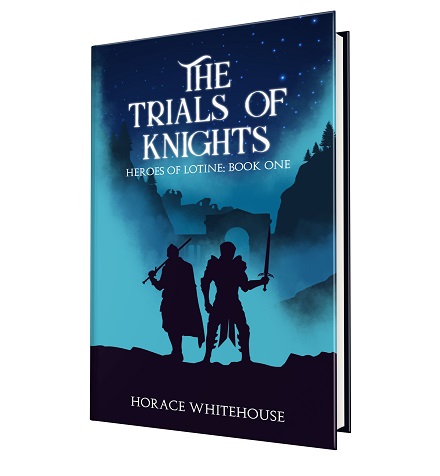
T: If that was the case, where you were toying with the idea of bringing your friends into your world, could the next logical step be making supplements for players from tables far beyond your own? You’ll certainly have the skill set necessary for putting together something that many people could enjoy.
HW: I think the next step would be certainly be to produce supplements. I’ve played around briefly with creating maps of the various cities but, like a lot of world building that I have done, I only intend to use it for my own reference, at least until the books are finished. After that, who knows…
T: What came first for you? The characters that you knew you were going to be following in The Trials of Knights, or the story that you knew you had to tell? What was the driving force behind this?
HW: It was both at the same time to be honest. The main characters, Tarimev and Torvald, originated from a short story I had written before. The story initially focused on a young farmer’s journey to becoming the King of his nation. Although the original version of the story was lost due to a computer mishap, I couldn’t let go of the tale.
With the memory of that lost story, I embarked on rewriting and expanding it into a full-fledged narrative. As I delved deeper into their world, I realized that the journey of the young farmer could be more compelling if I divided his character into two distinct individuals, each with their own strengths, weaknesses, and aspirations.
Thus, Tarimev and Torvald emerged as the primary characters in The Trials of Knights. Tarimev, embodying the determination and resilience of the young farmer, would rise from humble beginnings to face the challenges of leadership and the trials that awaited him. Torvald, on the other hand, represented a different path—a companion and friend to Tarimev, but with his own unique motivations and perspectives.
After this the story was my main focus, and each character that came along was always inspired by the plot, except for one character. Without giving too much away, one of the characters in the second book was inspired by a character I once created for a Dungeons and Dragons game, to pay some homage to where my interest in fantasy came from.
T: What was it like for you to basically recreate these characters who you were familiar with before? Did everything feel pretty much the same, or did it expand in strange new directions, where your ensemble could surprise you in some ways?
HW: It was very different, splitting the one character into two made them very different to the original and I had to learn about who these characters were as I wrote them. They certainly went in different directions than I had expected, the development of Tarimev in my current plan for book three certainly surprised me but, as the story goes at the moment, it is the best path for him. I try to write my characters as though they are living people, and as they evolve with the story the future plan for them also changes to better fit with who they have become rather than who they were originally.
T: Is there some part of you that still treats the original write-up as a sort of distant canon, a world where your characters did not split? With the prevalence of the multiverse in so much media these days, is it something that you’ve considered from time to time?
HW: If I’m honest a multiverse is not something that I’ve considered at all. I’d consider the original tale to be like an acorn that has grown into a trunk made of the four books that tell the main story and that will eventually branch off into side stories. But it’s all the same tree, just one universe.
T: How did the world of Lotine come about? How did you come to the decision that you needed to create a brand-new world, and tell stories in it?
HW: Right from the start I knew that I wanted to set my story in a world of my own creation, I wanted to have control over the lay of the land, the history, and the politics. It took a long time for Lotine to be completed to a stage where I was happy to begin writing, I began the creation with a basic map in mid-2020 and even just that map was evolving as I began the second book. Even now, some elements of Lotine’s history are changing to better suit the story that is being told, but it is a bit more difficult now since I have to ensure it doesn’t contradict anything that was told previously.
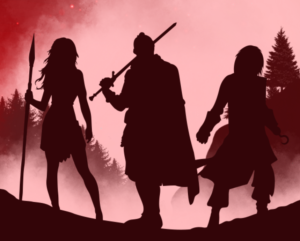
T: How do you navigate a world where the skeleton has been built—and certainly with its fair share of lore and mythology—and still leave room to shake things up from time to time? Do you consider your earlier writings gospel, or are you allowed to bend the history a bit here and there to suit your needs?
HW: Anything that has been written and published is set in stone for me, I’m not changing any of that. Anything that is in my own notes, such as the history outside of the books or future plotlines is very fluid and will change if it will improve the story. I actually had to do this in book two when I needed a reason for one character to help another and I changed the second character’s family history so that, instead of his family living in one place for generations, his grandfather had worked with the first character.
T: Do you find yourself doing a lot of “writing backward” to add additional lore to your world, and to layer a foundation of mythology beyond what you’ve already created? Or is your main focus on the road forward for your characters?
HW: Most of the lore that exists now is from writing backwards, I’d say that probably only 25% of what Lotine is now was written before I started writing. Obviously, my main focus is to move the story forward, but it’s always useful for me to have notes about what came before so that I know exactly how to move in the correct direction.
T: Right from the beginning of your story, you pitch your main characters into dire situations. Was it difficult thrusting your heroes into scenarios that shattered their way of life, or was it something you think was necessary in order to drive the tale forward?
HW: I’ll be honest, it was quite easy to make these characters face struggle, I have the full plot of all four books planned out and I know where I want these characters to end up. I know that if you don’t face struggle then you won’t grow as a person, so I knew that whatever they faced would shape them into the person that they should be. I touched upon this briefly during his time in the Ashen Mountain near the end of the book, where Tarimev realised that regret can be a good thing, as without moments that cause regret you wouldn’t end up where you should be. Some of the worst situations they faced were also very integral to the plot. Tarimev’s fight in chapter twelve, for instance, is the main catalyst for Tarimev’s character development and without it the story may never have begun.
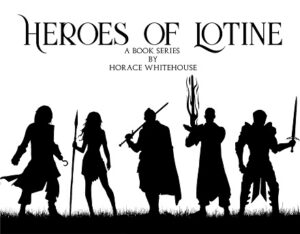
T: Your main characters seem safe—at least as far as reaching their logical end that you had planned for them. But what of side characters and bit roles that you might not have planned out as diligently? Do you ever have new characters appear that were not originally part of your plan that go “off-book” so to speak?
HW: Almost every character aside from the eponymous Heroes of Lotine weren’t originally in my plan. They usually form due to a need, such as Sergeant Roskin who was only intended to be a way for Tarimev to find his way to the knights at first but has become an important character to the kingdom, or Grazan who was just going to be a nameless shopkeeper but I liked his personality so much that he had to become more of a main character than he was supposed to be. In fact, most of the smaller characters within the book have had their roles enlarged purely because they are just enjoyable characters that help to make the world of Lotine feel more alive.
T: For some of the characters who have remained smaller in scope in your books, do you ever consider inflating their roles in later books? Is a character who had only a line or two earlier on able to have their destiny expand to fit the Lotine tapestry in a bigger sense?
HW: I always keep past characters in the back of my mind for exactly that reason, I’d much rather bring someone back than create a new character when I can. Unfortunately as so much of the story takes place in different parts of Lotine there just isn’t a feasible way for me to re-introduce some characters that wouldn’t realistically travel as far as the heroes.
T: The Heroes of Lotine has one book out currently, but you’re also working on a follow-up. What can you tell us about where the story is heading, without spoiling too much from the first book?
HW: As the series continues it will be focusing more on the name of the series as a whole, ‘The Heroes of Lotine’, and more characters will be stepping up to the plate to help with the discovery that Tarimev made at the end of the first book.
Also, the first book took place on a single continent, virtually a single country, but this is changing going forward, immersing readers in the vast and diverse world of Lotine. The main characters are always going to be Tarimev and Torvald, but they will have a lot more allies along the way.
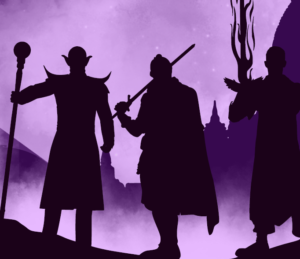
T: Again, I’m not trying to pull too much out of you and get spoilers that are too crazy, but can you give us a glimpse of the character from the follow-up who is your favorite? What makes them tick, and why do you enjoy them so much?
HW: It’s a struggle to pick one favourite, but I would have to say Daykon Edmonds. He has a rich backstory that I am enjoying slowly revealing to the readers throughout the course of the story and he is a much more complex and tragic character than he seems at first. Ebbina is a close second as she really comes into her own in the second book and really earns her place within the story.
T: Is it more enjoyable to create a character who is steady in their conviction, who seems immovable in their faith or their journey, or is it more fun for you to work on a character with shades of grey, and some nuance?
HW: I slightly prefer writing characters with shades of grey. It allows me to delve into the complexities of human nature, showcasing the intricacies that make each character unique and relatable. By avoiding the extremes of all-good or all-evil characters, I can craft more realistic and compelling personas that resonate with readers and leave them guessing as to what they might do next.
Of course, some characters are set in their ways and that’s not a bad thing, I just have to make sure that their ways are interesting enough to keep the readers hooked. Even then, they still have flaws, as we all do.
T: In order to tell a rich story, sometimes authors will sprinkle little clues about the future and where the story might end up leading. There are several tidbits of information that you left out for the reader early on as well. Did you know when you were writing it that it was going to pay off in the end, or was it something where you let the story tell itself, and you were meant to polish it?
HW: From the beginning I had the whole book planned out, so there were some things that I knew would be paying off later in the book, other things will also be panning out in future books and even, if I get around to them, some supplemental books that will focus on other characters or time periods in the history of Lotine. Once everything that I have planned is completed there will be links between every different piece of material set in Lotine.
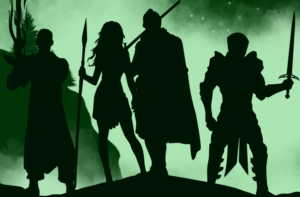
T: With as vast as Lotine is, and has the potential to be, are you planning on providing any other material, such as character images, or additional maps, or anything along those lines?
HW: Obviously, there are the maps within the book that cover the main areas featured in each book. I do have character images for every single character that features in the books so far, even minor characters such as Raimas who only appeared for a brief conversation, but these are solely for my own reference when describing the characters. I always found one of the best parts of reading a book is visualizing it within your head, and to create your own image of the character is part of that experience for the reader. I wouldn’t want to impose my ideas of how they should look on someone else, they can interpret the descriptions however they want to.
T: Right now, you’re a bit of a mystery online. Where could someone go to try and find out more information about Horace Whitehouse?
HW: The main place would be either my Facebook page or my Instagram page which you can find links to below. There is also my TikTok and Twitter accounts but I am not as active on those. I am also working on a website for the series which I will be sharing through my social media once it is complete. I’m more than happy to respond to any questions that people may have if they would like to contact me. I’d also like to say that the Kindle edition of ‘The Trials of Knights’ will be on a Kindle Countdown deal from 31st July 8:00am GMT until 7th August 8:00am GMT
Facebook: https://www.facebook.com/HoraceWhitehouse
Instagram: https://www.instagram.com/horacewhitehouse/
Twitter: https://twitter.com/HoraceWhitehou1
TikTok: https://www.tiktok.com/@books_by_horace
T: Horace, I wanted to thank you for taking the time to speak to me about your books and your growing world. It’s always a lot of fun to meet someone who is as passionate about their creations as you are, and I’m certain you’ll go far. I’m hoping that a lot more people learn about your material and about Lotine!
HW: Thank you for your time as well. I’m truly grateful for the opportunity to share the world of Lotine with you and all of your readers. Creating these books and building the world of Lotine has been a labour of love, and it’s incredibly rewarding to see others take an interest in it.
I hope this helps to reach a wider audience and introduce more people to the enchanting world of Lotine. Through my books and the world I’ve crafted, I aim to take readers on unforgettable journeys filled with adventure, emotion, and wonder.
T: Once again, I’d like to thank Horace Whitehouse for taking the time to pry himself away from a growing world filled with depth and richness. Writing a massive four-book series is no easy feat, but as we learned here, it seems that the author is more than up for the task. If you’re interested in Lotine, and its champions, be sure to check out The Trials of Knights (The Heroes of Lotine Book 1) on Amazon today!
Michael DeAngelo
Latest posts by Michael DeAngelo (see all)
- Fantasy Promo – Quinine - July 25, 2024
- Sigil Art – Grim’s Hold - July 24, 2024
- Fantasy Promo – Light the Shadows (Under Elfhame’s Stars) - July 24, 2024
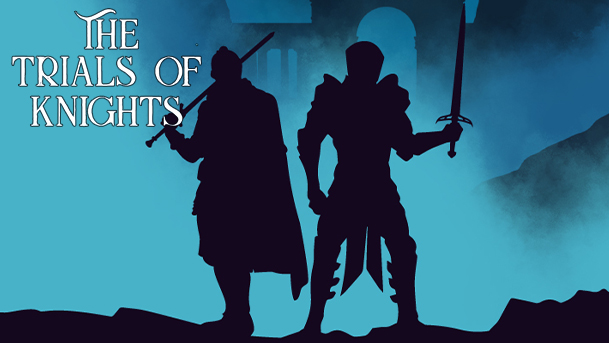
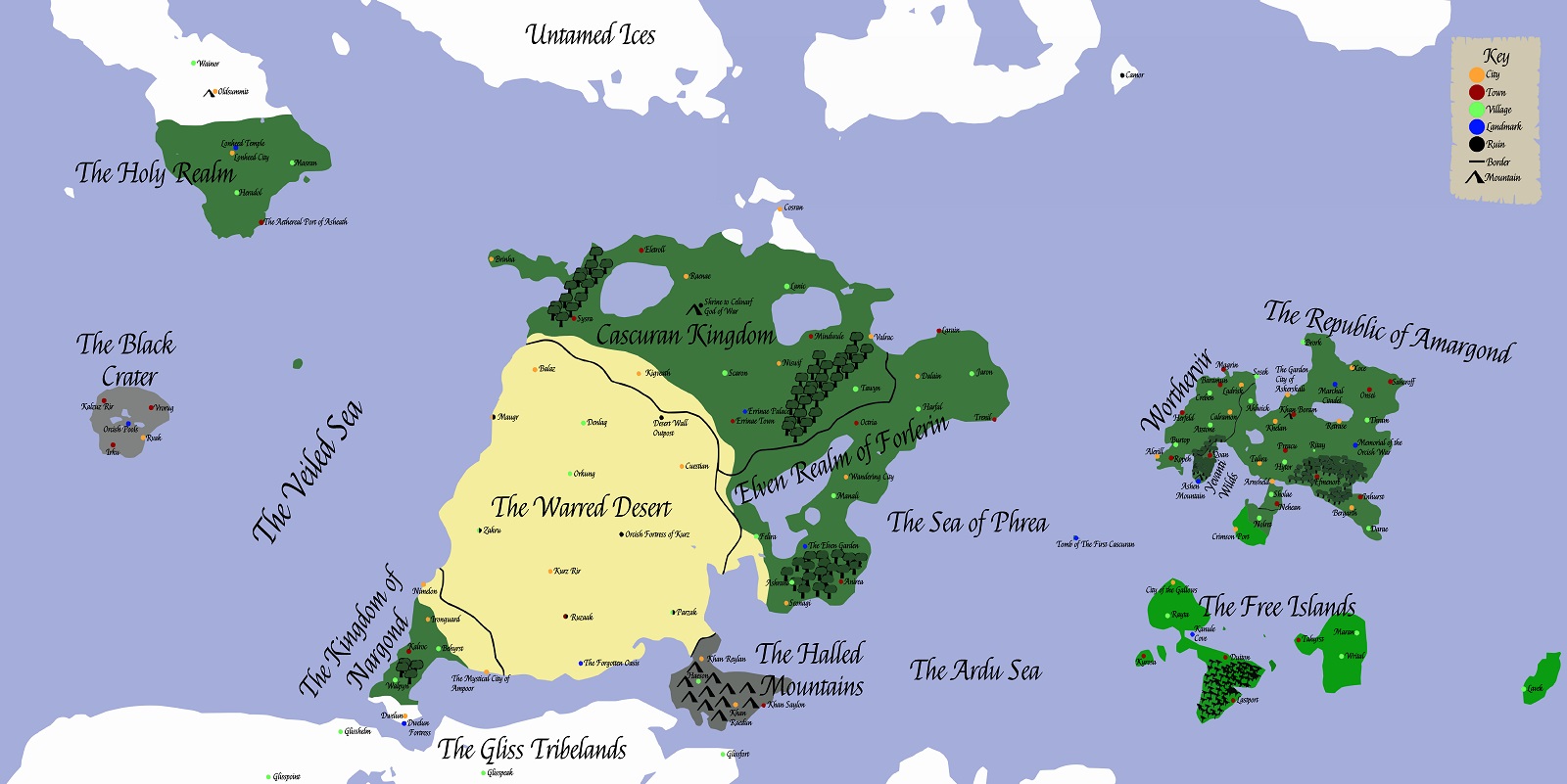
Are you an Anglican st Barnaby s graduate from Chicago?
Hi there. Are you asking me (Michael DeAngelo), or Horace Whitehouse? If you’re asking Horace, I’ll reach out to him and see if I can get a response for you!